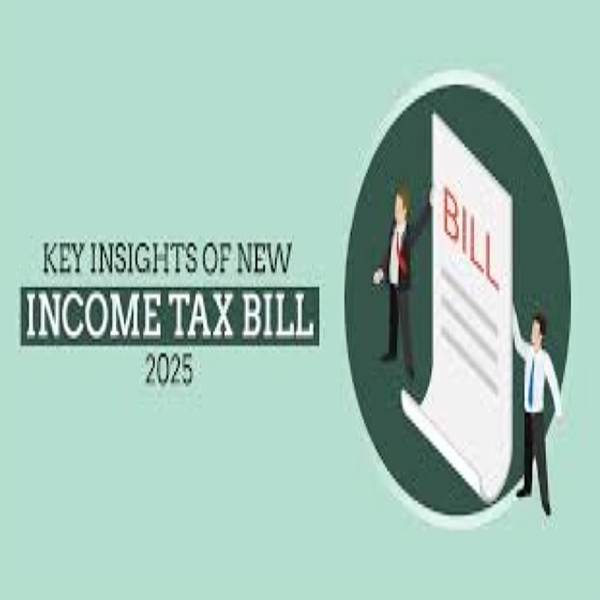Income Tax Bill 2025: Old vs. New Regime & Key Changes
The Income Tax Bill 2025, consisting of 622 pages, 536 sections, and 23 chapters, will be introduced in the Lok Sabha on Thursday, February 13, 2025.
Once enacted, this bill will replace the Income Tax Act of 1961, which has become increasingly intricate and challenging to manage due to numerous amendments.
Comparison: New Income Tax Bill vs. Old Regime
One of the significant changes in the proposed law is replacing the term “previous year” from the 1961 Act with “tax year.” Moreover, the concept of an “assessment year” has been eliminated. Under the existing framework, income earned in one year (e.g., 2023-24) is taxed in the subsequent “assessment year” (e.g., 2024-25). The new bill streamlines this process by establishing a single “tax year.
The Income Tax Bill 2025 expands to 536 sections, an increase from the 298 sections in the current Income Tax Act of 1961. The number of schedules will also rise from 14 to 16, while the total number of chapters remains unchanged at 23. Despite the increase in sections, the overall length of the legislation has been significantly reduced to 622 pages—nearly half the size of the existing Act, which has grown over six decades due to multiple amendments. For comparison, the original 1961 Act comprised 880 pages.
Rajat Mohan, Senior Partner at AMRG & Associates, told PTI that the rise in sections reflects a more structured approach to tax administration, incorporating modern compliance systems, digital governance, and streamlined regulations for both businesses and individuals. The revised law includes 16 schedules and 23 chapters.
Additionally, the proposed bill seeks to provide clearer tax guidelines for stock options (ESOPs) to reduce disputes. It also integrates key judicial rulings from the past 60 years to improve legal certainty.
A significant change in the new tax bill is the delegation of specific powers to the Central Board of Direct Taxes (CBDT). Under the current system, the Income Tax Department requires parliamentary approval for procedural matters, tax schemes, and compliance frameworks. However, the proposed legislation grants the CBDT the authority to introduce such schemes independently, reducing bureaucratic hurdles and enhancing tax governance efficiency.
As outlined in Clause 533 of the new law, the CBDT will have the power to establish tax administration rules, implement compliance measures, and enforce digital tax monitoring systems without the need for frequent legislative amendments.
Following its introduction, the bill is likely to be referred to a parliamentary standing committee for detailed examination. Finance Minister Nirmala Sitharaman had previously announced in the 2025–26 Budget that the new tax bill would be presented during the ongoing parliamentary session. The comprehensive review of the Income Tax Act of 1961 was first introduced in the July 2024 Budget.
To facilitate this review, the CBDT formed an internal committee focused on simplifying and streamlining tax laws to minimize disputes and enhance tax certainty. Additionally, 22 specialized subcommittees were established to assess different aspects of the existing Income Tax Act.
Public feedback was sought in four key areas: simplifying legal language, reducing litigation, easing compliance, and eliminating outdated provisions. As part of this process, the Income Tax Department received 6,500 suggestions from various stakeholders.
Revised Tax Slabs Under the New Regime
Under the proposed tax structure, annual incomes up to ₹12 lakh will not be taxed, except for special income categories. The revised tax slabs will provide greater financial relief to taxpayers, increasing disposable income from the next financial year.
Also read: Veer Savarkar shapes PM Modi’s Marseille visit.
Proposed Tax Slabs for FY 2025-26:
Up to ₹4 lakh: Nil
₹4-8 lakh: 5%
₹8-12 lakh: 10%
₹12-16 lakh: 15%
₹16-20 lakh: 20%
₹20-24 lakh: 25%
Above ₹24 lakh: 30%
Current Tax Slabs for FY 2024-25:
Up to ₹3 lakh: Nil
₹3-7 lakh: 5%
₹7-10 lakh: 10%
₹10-12 lakh: 15%
₹12-15 lakh: 20%
Above ₹15 lakh: 30%
Under the new tax regime, individuals earning up to ₹12 lakh per year will not be liable to pay income tax. Additionally, with the standard deduction of ₹75,000, taxpayers with an annual income of up to ₹12.75 lakh will also have zero tax liability.



